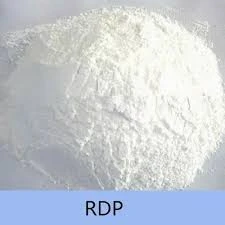
Dec . 18, 2024 02:48 Back to list
hpmc for tile adhesive
The Role of HPMC in Tile Adhesives
Hydroxypropyl Methyl Cellulose (HPMC) has emerged as a vital ingredient in the formulation of tile adhesives, revolutionizing the field of construction and renovation. As a cellulose ether, HPMC is derived from natural cellulose and modified to provide unique properties that enhance the performance of adhesives. This article delves into the functions, benefits, and applications of HPMC in tile adhesive formulations.
Understanding HPMC
HPMC is a non-ionic, water-soluble polymer that has found its place in various industries, including pharmaceuticals, food, and construction. Its versatility stems from its ability to form gels and films, thickening the viscosity of liquids while maintaining stability. In tile adhesives, HPMC plays a significant role in improving adhesion, workability, and durability.
Benefits of HPMC in Tile Adhesives
1. Enhanced Adhesion One of the fundamental roles of HPMC in tile adhesives is to improve adhesion properties. It helps the adhesive bond effectively to various substrates, ensuring tiles adhere firmly and reducing the chances of delamination. This adhesion is particularly important in areas exposed to moisture, such as kitchens and bathrooms.
2. Improved Workability HPMC enhances the workability of tile adhesives, making them easier to mix, spread, and apply. The thickening property provided by HPMC allows for a creamy consistency, which ensures better trowelability. This feature is critical for professionals who need to apply adhesives quickly and effectively.
3. Open Time The presence of HPMC extends the open time of tile adhesives, allowing for greater flexibility during installation. Applicators can take their time positioning tiles without worrying that the adhesive will set too quickly. This is especially advantageous in larger projects where multiple tiles need to be adjusted for alignment and spacing.
hpmc for tile adhesive

4. Water Retention HPMC contributes to the water retention capability of tile adhesives. This characteristic is vital for ensuring that the adhesive remains workable and maintains bond strength even in dry conditions. Water retention prevents premature drying, allowing for stronger bonds as the adhesive cures.
5. Enhanced Mechanical Properties HPMC contributes to the overall mechanical properties of the adhesive, such as tensile strength and flexibility. This enhancement is crucial when tiles are subjected to stress or movement in areas like floors or walls. The ability of the adhesive to withstand such forces ensures that the tiles remain intact and functional over time.
6. Resistance to Mildew and Bacteria HPMC is known for its resistance to microbial growth, thereby enhancing the durability of tile adhesives, especially in humid environments. This property helps in preventing mold and mildew formation, promoting healthier living conditions.
Applications of HPMC-based Tile Adhesives
Tile adhesives containing HPMC are widely used in both residential and commercial settings. They are suitable for a variety of substrates, including concrete, gypsum, and cement boards. HPMC-based adhesives can be used for different tile types, such as ceramic, porcelain, and stone, making them versatile for various tiling projects.
These adhesives are commonly applied in kitchens, bathrooms, and outdoor areas where moisture resistance and durability are paramount. Furthermore, the adaptability of HPMC allows for its incorporation into both thin-set and thick-bed adhesive systems, ensuring that they meet the specific requirements of different installation methods.
Conclusion
In conclusion, Hydroxypropyl Methyl Cellulose is a game-changer in the realm of tile adhesives. Its ability to enhance adhesion, improve workability and provide durability makes it an indispensable component in modern adhesive formulations. As the construction industry continues to evolve, the demand for quality materials that ensure long-lasting and efficient installations will only increase, solidifying HPMC's place at the forefront of tile adhesive technology. By harnessing the benefits of HPMC, contractors and homeowners alike can achieve superior results in their tiling projects.
-
Versatile Hpmc Uses in Different Industries
NewsJun.19,2025
-
Redispersible Powder's Role in Enhancing Durability of Construction Products
NewsJun.19,2025
-
Hydroxyethyl Cellulose Applications Driving Green Industrial Processes
NewsJun.19,2025
-
Exploring Different Redispersible Polymer Powder
NewsJun.19,2025
-
Choosing the Right Mortar Bonding Agent
NewsJun.19,2025
-
Applications and Significance of China Hpmc in Modern Industries
NewsJun.19,2025







